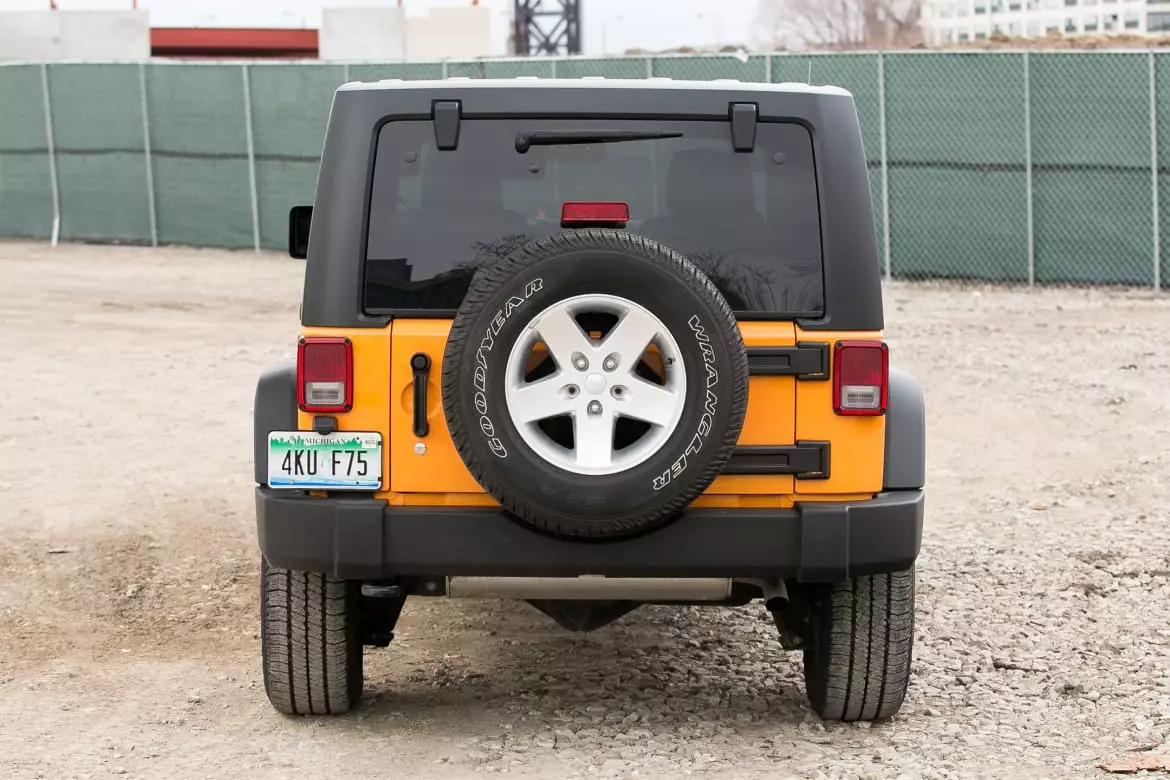Common Spare Tire Problems


CARS.COM — You never know when you’ll need to use your spare tire, but because it’s out of sight on most vehicles, it’s usually out of mind, too. Even if the spare is mounted on the back of an SUV in full view, chances are it doesn’t get the attention it deserves — or the air pressure it needs.
Related: Video: Tire Pressure 101
All tires on a car lose air pressure over time because air permeates rubber (and for nitrogen-filled tires, nitrogen permeates the rubber, too, causing them to lose pressure). If a compact spare tire has been tucked away under a cargo floor for five years, there’s a good chance it’s severely underinflated — and possibly unable to handle the load and stress of emergency road duty. An underinflated tire can’t safely carry the same amount of weight as a fully inflated tire.
Inflation and Rotation
Unlike your four regular tires, compact spare tires typically should be inflated to around 60 pounds per square inch; PSI far short of that level could fail and damage the wheel, as well. Even a fully inflated “doughnut” spare is a temporary fix, though, typically for driving up to 100 miles at speeds no higher than 55 mph. (For more on that, see how to find out your vehicle’s recommended tire pressure.)
Repair shops that perform tire rotations routinely check the inflation levels of the four tires on the vehicle, but the spare is usually ignored. To be safe, vehicle owners should ask that shops check the spare or do it themselves at least twice a year.
Special Care for Spares Mounted Outside
On SUVs and trucks that mount the spare on the liftgate or under the cargo area, long-term exposure to dirt, salt, water and snow can cause corrosion, and make it hard to remove the mounting hardware or operate latches and cables in an emergency. Periodic inspection, and cleaning or lubrication if needed, can make it easier to remove the spare when a tire goes flat.
Finally, if you’re the kind of person who routinely drives with the trunk or cargo area loaded with unnecessary stuff, keep in mind that you’ll probably have to remove all that stuff to get to the spare tire and jack, and then put it the flat tire back when you’re done changing the tire. Moreover, a compact spare tire fits as snug as a bug and is out of sight, but a flat — and usually filthy — full-size tire and wheel won’t fit into the same spot and will have to share space with all that stuff. Keeping a large plastic trash bag in the vehicle will allow you to transport a flat tire without dirtying the trunk or, potentially, the cabin.
No Spare? Here’s What to Check Instead
If your vehicle has a tire inflator kit instead of a spare tire, you could run into different problems. First, the sealant may not be able to seal every puncture depending on its severity and location. In addition, the sealant that gets injected into the tire probably has an expiration date (usually four years or less from when it was new). The sealant might not work as well after that date, so it should be replaced.
Spare tires may not be mentioned on service menus at repair shops, but a little preventive maintenance can pay dividends when they’re needed and help prevent a repair.
Cars.com’s Editorial department is your source for automotive news and reviews. In line with Cars.com’s long-standing ethics policy, editors and reviewers don’t accept gifts or free trips from automakers. The Editorial department is independent of Cars.com’s advertising, sales and sponsored content departments.

Contributor Rick Popely has covered the auto industry for decades and hosts a weekly online radio show on TalkZone.com.
Featured stories




